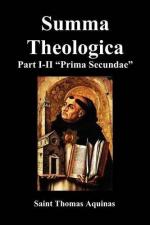The figurative reason for these things is that all these animals signified certain sins, in token of which those animals were prohibited. Hence Augustine says (Contra Faustum iv, 7): “If the swine and lamb be called in question, both are clean by nature, because all God’s creatures are good: yet the lamb is clean, and the pig is unclean in a certain signification. Thus if you speak of a foolish, and of a wise man, each of these expressions is clean considered in the nature of the sound, letters and syllables of which it is composed: but in signification, the one is clean, the other unclean.” The animal that chews the cud and has a divided hoof, is clean in signification. Because division of the hoof is a figure of the two Testaments: or of the Father and Son: or of the two natures in Christ: of the distinction of good and evil. While chewing the cud signifies meditation on the Scriptures and a sound understanding thereof; and whoever lacks either of these is spiritually unclean. In like manner those fish that have scales and fins are clean in signification. Because fins signify the heavenly or contemplative life; while scales signify a life of trials, each of which is required for spiritual cleanness. Of birds certain kinds were forbidden. In the eagle which flies at a great height, pride is forbidden: in the griffon which is hostile to horses and men, cruelty of powerful men is prohibited. The osprey, which feeds on very small birds, signifies those who oppress the poor. The kite, which is full of cunning, denotes those who are fraudulent in their dealings. The vulture, which follows an army, expecting to feed on the carcases of the slain, signifies those who like others to die or to fight among themselves that they may gain thereby. Birds of the raven kind signify those who are blackened by their lusts; or those who lack kindly feelings, for the raven did not return when once it had been let loose from the ark. The ostrich which, though a bird, cannot fly, and is always on the ground, signifies those who fight for God’s cause, and at the same time are taken up with worldly business. The owl, which sees clearly at night, but cannot see in the daytime, denotes those who are clever in temporal affairs, but dull in spiritual matters. The gull, which both flies in the air and swims in the water, signifies those who are partial both to Circumcision and to Baptism: or else it denotes those who would fly by contemplation, yet dwell in the waters of sensual delights. The hawk, which helps men to seize the prey, is a figure of those who assist the strong to prey on the poor. The screech-owl, which seeks its food by night but hides by day, signifies the lustful man who seeks to lie hidden in his deeds of darkness. The cormorant, so constituted that it can stay a long time under water, denotes the glutton who plunges into the waters of pleasure. The ibis is an African bird with a long beak, and feeds on snakes; and perhaps it is the same as the stork:




